The AMD Radeon VII Review: An Unexpected Shot At The High-End
by Nate Oh on February 7, 2019 9:00 AM ESTRadeon VII & Radeon RX Vega 64 Clock-for-Clock Performance
With the variety of changes from the Vega 10 powered RX Vega 64 to the new Radeon VII and its Vega 20 GPU, we wanted to take a look at performance and compute while controlling for clockspeeds. In this way, we can peek at any substantial improvements or differences in pseudo-IPC. There's a couple caveats here; obviously, because the RX Vega 64 has 64 CUs while the Radeon VII has only 60 CUs, the comparison is already not exact. The other thing is that "IPC" is not the exact metric measured here, but more so how much graphics/compute work is done per clock cycle and how that might translate to performance. Isoclock GPU comparisons tend to be less useful when comparing across generations and architectures, as like in Vega designers often design to add pipeline stages to enable higher clockspeeds, but at the cost of reducing work done per cycle and usually also increasing latency.
For our purposes, the incremental nature of 2nd generation Vega allays some of those concerns, though unfortunately, Wattman was unable to downclock memory at this time, so we couldn't get a set of datapoints for when both cards are configured for comparable memory bandwidth. While the Vega GPU boost mechanics means there's not a static pinned clockspeed, both cards were set to 1500MHz, and both fluctuated from 1490 to 1500MHZ depending on workload. All combined, this means that these results should be taken as approximations and lacking granularity, but are useful in spotting significant increases or decreases. This also means that interpreting the results is trickier, but at a high level, if the Radeon VII outperforms the RX Vega 64 at a given non-memory bound workload, then we can assume meaningful 'work per cycle' enhancements relatively decoupled from CU count.
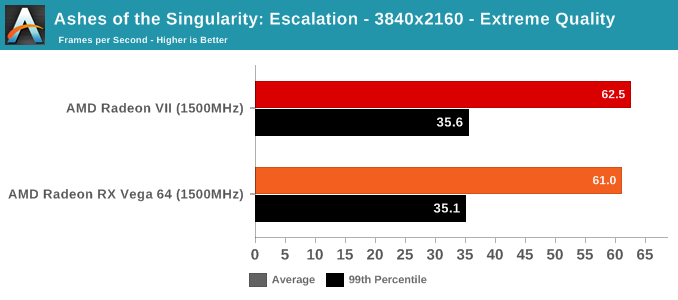
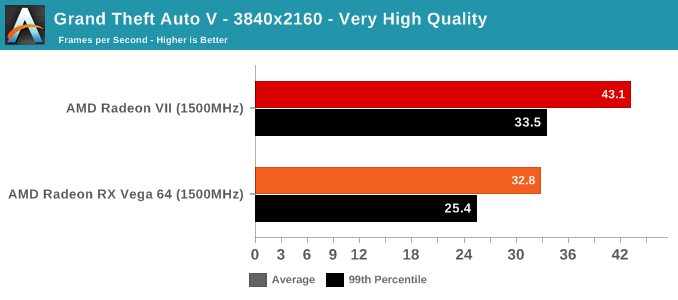

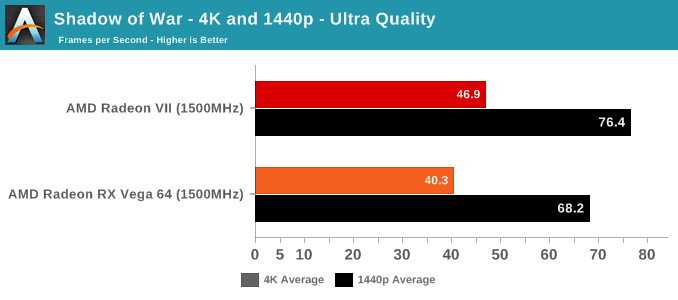
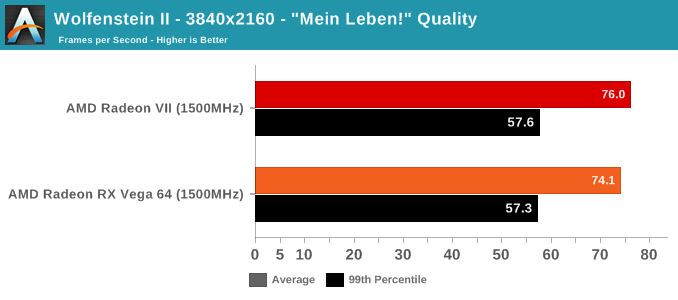
As mentioned above, we were not able to control for the doubled memory bandwidth. But in terms of gaming, the only unexpected result is with GTA V. As an outlier, it's less likely to be an indication of increased gaming 'work per cycle,' and more likely to be related to driver optimization and memory bandwidth increases. GTA V has historically been a title where AMD hardware don't reach the expected level of performance, so regardless there's been room for driver improvement.

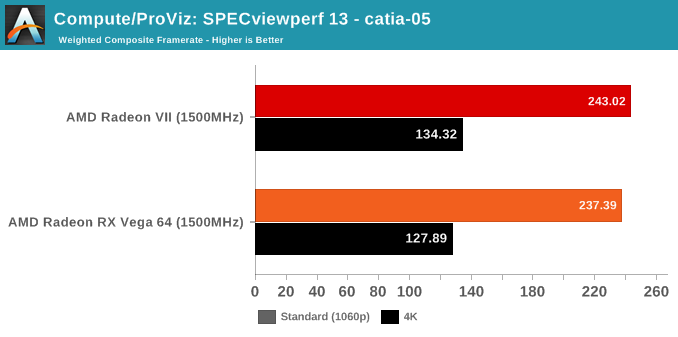
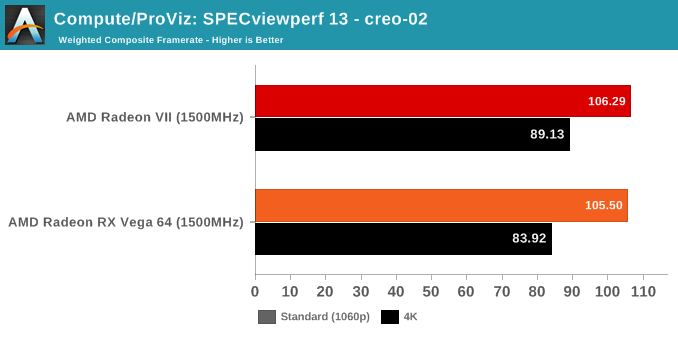
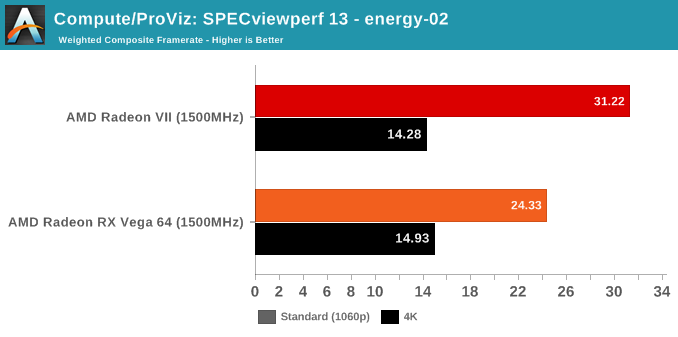
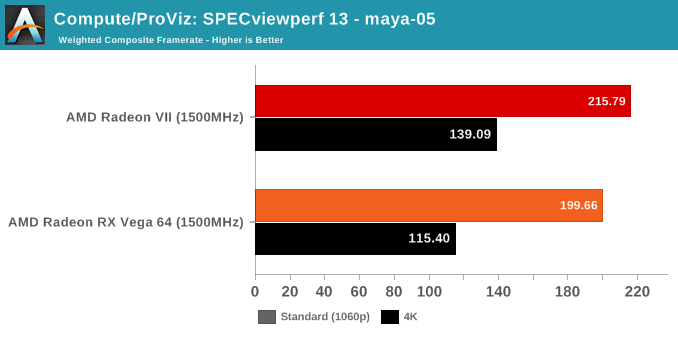
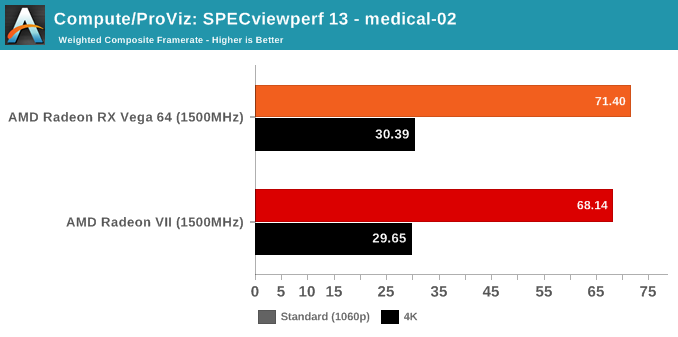


SPECviewperf is a slightly different story, though.
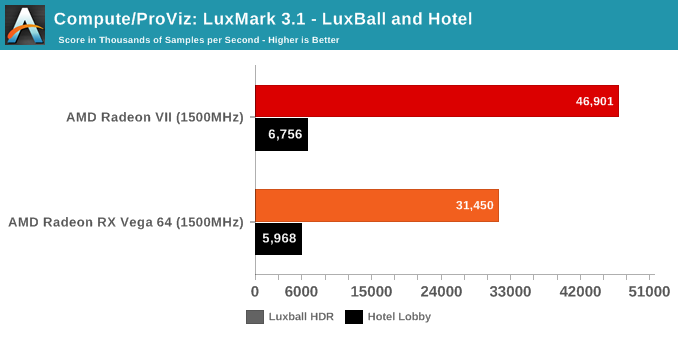
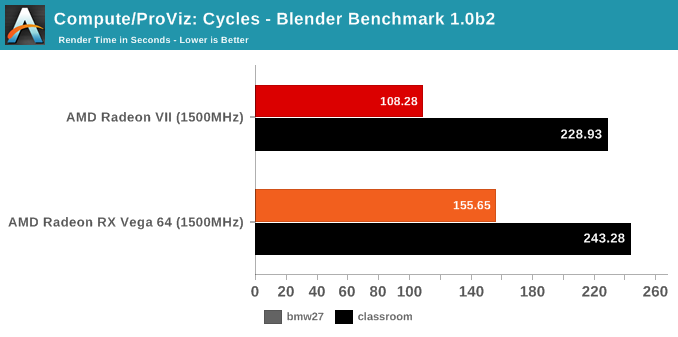
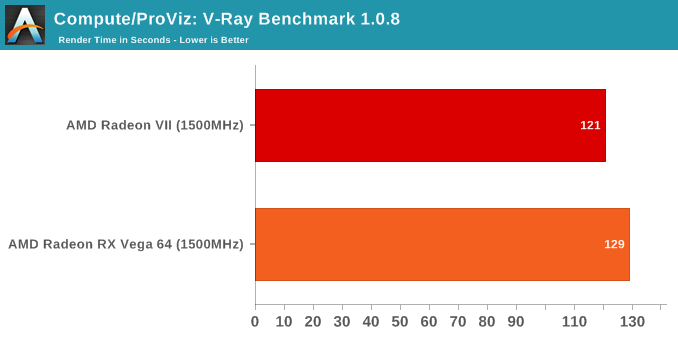
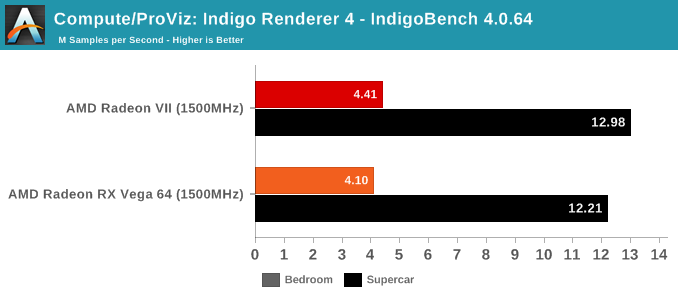










289 Comments
View All Comments
Samus - Sunday, February 10, 2019 - link
BenSkywalker, the short answer is this is based on a dated architecture (2 generations behind Turing) so there is no real way it's going to beat it in efficiency: It doesn't even try to compete with the 2080Ti.But the fact that a GCN\Vega-based card can nearly tie a 2080 is commendable. I think the problem this card has is it's $100 too expensive.
BenSkywalker - Monday, February 18, 2019 - link
If we were comparing ray traced performance that would be a valid point, but we are talking about traditional rendering. They have a half node process advantage and are using more power than a 2080 by a comfortable amount.Try finding another chip, CPU or gpu that was built with a half node advantage, used more power *and* was slower.
Either TSMC is having major problems with 7nm or AMD set a new standard for poor engineering in this segment.
Ganjir - Saturday, February 9, 2019 - link
It is a shame the infinity fabric is disabled, because crossfire would actually give these cards a reason to use ALL of that bandwidth and capacity - at least on one card. Is there a way to enable this or is it a hardware limitation?Alistair - Saturday, February 9, 2019 - link
I calculate OxfordGuy has made 11 percent of all comments in this thread ;)Zingam - Sunday, February 10, 2019 - link
AMD should invest in power stations. And maybe even sell their future Radeon XIV in a bundle with a little power station!Crion66 - Sunday, February 10, 2019 - link
Nate or Ian, can AMD choose to enable pci-express 4.0 on this card when Ryzen/TR4 3000 is released?Also can crossfire be implemented by popular gamer demand?
ccfly - Tuesday, February 12, 2019 - link
did anyone test this card in c4d ,radeon pro vs octane for speed ?peevee - Tuesday, February 12, 2019 - link
"Though AMD hasn’t made a big deal of it up to now, Vega 20 is actually their first PCI-Express 4.0-capable GPU, and this functionality is enabled on the Radeon Instinct cards. However for Radeon VII, this isn’t being enabled, and the card is being limited to PCIe 3.0 speeds"Oh God, how much I hate marketoids! Morons who cannot get an A even in the primitive school math are hired into marketing depts, and ruin EVERYTHING.